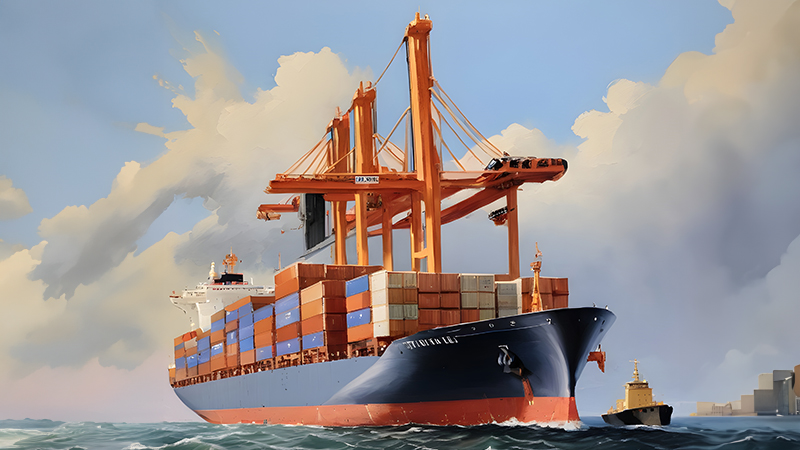
Procurement Digitalization in a Post-Pandemic World


Over the years, technology has served as both a catalyst and an enabler of the procurement vertical in most global firms, which has evolved from a transactional function in the 80s to a highly strategic and digital department today. Fortunately, this evolution has coincided with mass shifts in the technologies and tools that deliver successful procurement performance. The most significant shift started when e-Procurement and e-Sourcing were fully utilized in most large and mid-size firms. Post-2010, the industry moved on to predictive analytics, which were coupled with existing tools to form the ‘digital procurement’ phase that remains in place today.
The industry is now gearing up to embrace prevalent technologies like AI, Robotic Process Automation (RPA), blockchain, and IOT. ‘Digital procurement’ refers to the meaningful implementation of these evolutionary technologies and leveraging them to tackle long-term issues related to sourcing.
Digital Procurement has allowed for Strategic Sourcing (S2C) to become predictive, transactional procurement (P2P) to be automated, and Supplier Risk Management (SRM) to be proactive. The primary aim of Strategic Sourcing teams (or S2C professionals) is, among other things, to source goods and services, supplier selection, and secure best value and prices for organizations; Recently, S2C professionals have begun to:
- Categorize and manage spending in real time
- Predict demand with AI
- Obtain the landed cost of any commodity for all alternative countries of origin.
- Predict future sources of supply
- Address alerts from all negotiated agreements in a timely manner
In a Post-Covid-19 world, however, Procurement Digitalization will gain even more importance as companies will look to achieve greater operational efficiency, while keeping costs under control.
The Evolution of Procurement and Supply Chains in the Digital Phase – The Shift from Tactical to Strategic Procurement
Most areas of business are being impacted by digital transformation. As a result of this digitization process, the procurement mandate has radically shifted from having a purely ‘transactional’ focus to a ‘strategic’ focus. The expectation has shifted from tactical KRAs (i.e. achieving cost-effective purchases with the help of low-risk suppliers) to highly strategic ones (i.e. providing high added value through high-spend visibility, real-time analytics and intelligence, eliminating unnecessary tail-end spend, and aiming to improve savings targets while reducing cost-to-serve).
In the current scenario, it has become challenging for source-to-pay technology tools to aid the procurement function in delivering the enlarged commitments and modern KPIs. This has resulted in the rise of emerging technologies that address these new challenges, like automation, blockchain, and IoT. Some of the key benefits of using these new technologies in procurement are as follows:
- To address 100 percent spend globally – Effectively addressing all types of spending (i.e. large recurring spending on ad hoc purchases).
- The application of real-time market intelligence and analytics – Global teams of dedicated category specialists bringing real-time market intelligence and a prudent understanding of stakeholder needs, alternatives, and market dynamics to create formidable spending strategies.
- Sustained Savings Delivery – Performance data on cost compliance and savings helps to drive continuous cost innovation and supplier performance, which, in-turn, lead to sustained results.
- To increase agility and mitigate risk – Disruptions in volatile supply markets can be handled well.
- To fuel Growth – Constantly deliver synergies resulting in global expansion.
- To support Sustainability
Most Procurement Organizations place emphasis on a set of ‘5 core’ transformation KPIs that gauge the efficiency and sustainability of their procurement function. These procurement KPIs were incorporated into the strategic approach post-2010. After the transformation towards a digital approach was laid out in 2015, organizations were able to streamline and improve their operations to achieve KPI levels that are closer to the required target. The 5 core KPIs being discussed are:
- Overall Cost of Procurement (percentage of spend)
- Spend Visibility and Understanding (percentage of spend)
- Tail Spend (percentage of spend)
- Contract and Policy Compliance Level
- Strategic Suppliers (percentage of suppliers)
The table below paints a picture of the improvement in KPI figures after the digitalization phase of procurement, which was initiated around 2015:
Procurement KPI |
2011 |
2015 |
2022 (Expected) |
Impact of Digitization |
|
Overall Cost of Procurement |
>0.5% |
~ 0.5% |
< 0.5% |
Leaner procurement function,high cost optimization |
|
Spending Visibility & Understanding |
15-25% |
50-70% |
> 95% |
Increased use of advanced analytics and IoT support to help establish strong spending insights |
|
Tail Spend |
45-55% |
25-35% |
< 10% |
Elimination of maverick purchases using automation and an efficient purchasing experience for end-users |
|
Contract & Policy Compliance Level |
45-55% |
65-75% |
> 95% |
Increased use of cognitive systems to aid users to increase compliance, automation, and quality. |
|
Strategic Suppliers |
45 – 55% |
75-85% |
100% |
High control through constant partnership with strategic suppliers. |
Present Scenario & Adoption Trends – Trending Digital Tools & Platforms
Procurement technologies are evolving rapidly, and are moving in a cycle that starts in the emerging phase, goes into the maturity phase, and finally enters the core phase where these technologies are widely adopted in daily procurement operations. Most firms deploy multiple forms of core procurement technologies. These core technological tools usually consist of a mix of spend analytics, eSourcing, contract management, and other eProcurement elements (including eCatalogs, eInvoicing, etc.). Core system deployment requires healthy amounts of capital spending and significant integration work.
In contrast, emerging and maturing technologies tend to be characterized by faster deployment. A lot of these tools use Software as a Service (SaaS) models that are light in terms of integration and preparation of data/systems, and are capable of a turnaround of results within days or weeks.
Some of the latest technologies that have entered the maturity phase for procurement from an emerging category are as follows:
- Cognitive Computing & Artificial Intelligence
Utilization of Pattern Recognition software and iterative machine learning algorithms to rapidly categorize unorganized spending, cost, and contract and supplier data, to generate new ideas and opportunities. Examples include Raw AP records and T&E system data outside of Enterprise Resource Planning (ERP)
- Intelligent Content Extraction
Use of Optical Character Recognition (OCR) and learning algorithms to decipher unstructured documents like PDF file of contracts, specification drawings, and a bill of materials to build critical data such as pricing tables, payment terms, and other clauses within a day.
- Predictive and Advanced Analytics
Integrates modeling, statistics, machine learning, and AI with multiple third party data sources to draw most likely scenarios for cost/price fluctuations, demand, supplier/country risk, and helps in terms of proactive decision making.
- Visualization
The transformation of data into user/executive friendly, visual formats that help simplify data for effective decision making.
- Collaboration Networks
Digital platforms that enable better visibility for buyers and suppliers in the overall supply chain. Users can upload supplier information in the cloud, measure, analyze, and manage supplier performance, identify joint process improvement areas, and mitigate supplier risk.
- Crowdsourcing
Using captured inputs like data and user sentiment with the help of mobile technology; Organizations can track trends and events that impact supply chains and vendor performance.
- 3D Printing
Predominantly used to make rapid proto-types of materials, helping to eliminate stocking activities of low volume items, and replacing them with on-demand production. Rapid prototyping will become an integral part of strategic sourcing for direct materials in the near future.
- Robotics
For procurement, Robotic Process Automation (RPA) software identifies patterns and helps to perform rule based tasks, thereby eliminating FTE based resources. This is being increasingly used in places including off-shore offices and shared service centers to save costs incurred by human resources.
Some of the technologies or solutions that could impact procurement in the near future, and are currently in an emerging category, are as follows:
- Blockchain
Use of encrypted data structure that utilizes a trusted peer-to-peer network to create digital transaction ledgers, which can verify transactions in the P2P process and then trigger automated payment.
- Sensors and Wearables
Devices, in a hand-held device or wearable in other forms, can monitor the movement of goods and inventory levels for reordering and supporting audit tracking during site visits.
- Cyber Tracking
Use of real-time tracking for online or physical tasks, helps to proactively monitor vendor performance. When combined with third party information, this technology can draw trends and predict supplier risk.
- Virtual Reality and Spatial Analytics
When organizations combine multiple solutions for securing procurement, the value derived from these technologies is multiplied. Detecting status changes of procurement using video, location data, and pattern analyses will enable professionals to get more by doing less.
Artificial Intelligence & Robotic Process Automation – The Way Forward for Procurement Analytics
Currently, industries such as High Tech/telecom, Manufacturing, and Financial services have been the front-runners in utilizing Artificial Intelligence (AI) and Robotic Process Automation (RPA); Yet, these will become the go-to solutions for more small and medium enterprises in the coming years. AI refers to a collection of technologies and a combination of hardware and software applications, such as machine learning (ML) and natural language processing (NLP), that are capable of supporting procurement professionals to handle the tons of data generated through ERP systems and other manual entries, and draw insights like spend classification and management.
With respect to RPA, these solutions replace routine, repetitive tasks and enable machines to complete these tasks in a faster and more efficient manner. Some of the applications of RPA across different end-users are shown below:

Under the umbrella of AI, organizations are improving their capabilities in the areas of machine learning, RPA with smart automation, and Natural Language Processing (NLP). NLP and machine learning are considered to be the enablers of AI, and these solutions have recently gained traction in procurement use cases. Procurement Organizations can create an advanced procurement analytics program, where the priority of output will be innovation, moving from a present nature of optimized output; This shift in the approach will be driven by AI and machine learning.
Some of the top Fortune 500 adopters of Best in Class Procurement Analytics are Coca Cola Enterprises, Diageo, P&G, GSK, Anglo American, Xerox, Merck, among others. The key objective of these firms is to implement these analytic practices ranging from supplier rationalization, spend classification, and building an efficient procurement analytics practice to supporting business decisions.
For procurement, the potential of AI to extract critical knowledge from the wealth of big data and to automate related processes is huge. With respect to analytics in procurement, a few elements of AI can be deployed across the S2C analytical cycle to improve the efficiency of the strategic sourcing process. Some of the key benefits of this deployment are as follows:
- Category Taxonomy Design – Standardization of the structure and nomenclature of categorization.
- Data Visibility – Automation of data consolidation, cleansing, and categorization; Pattern Identification of spend data; And advanced supplier risk management
- Spend Categorization and Management – Alignment of disparate information sources with an associated category, leverage economies of scale, and advanced spend analytics and insights
- Real-time, Automated Analytics – Quick processing of incoming data; Identifying key patterns and anomalies; Enabling quick action for procurement managers
- Opportunity Assessment - Thorough analysis of spend, market, cost through analytics before sourcing events will help to create better opportunities.
- Accuracy in Report Generation – Multiple format auto-generated reports; Effective dashboard for leadership and wider teams.
- Contract Administration, Management, and Drafting – Effective contract review using NLP; Stringent flagging of noncompliance by parties to mitigate risk and ensure strict adherence.
With respect to the implementation of AI solutions for procurement, it is sensible to mitigate any implementation risk by avoiding a cross-organizational approach. It is advisable to utilize AI on a case-by-case basis and expand its use after the learnings or supplier relationships have been cultivated within teams. The maturity of RPA is currently higher than AI, but the adoption rate will exceed 200 percent over the next few years.
Key Challenges to Implementation in a Post-Covid-19 World
One of the first and most key challenges to the successful integration of a new solution -- especially in a post-pandemic phase, when companies look to preserve cash in the face of uncertainty -- is the compatibility of the existing hardware/software architecture with the new system. Hence, being prepared for what is to come is the first step in creating mitigating steps before initiating the implementation phase. Some of the other significant challenges are:
- Communication
It is imperative that the individual or the team can comprehend the impact of the decisions generated by the AI-powered platform, and provide reassurance to leadership that the recommendations driven by cognitive analytics are explainable.
- Organization buy-in
With respect to presenting the AI application business case to leadership, the understanding of AI technologies and its impact needs to be comprehended by executives. The lack of familiarity in this area, because it is a nascent technology, may require the repositioning of stakeholders to reach the expected level of thought and do the work required.
- Nascent nature of AI suppliers
Owing to the nascent nature of AI technology, it is possible that product offerings presented by suppliers as machine learning may instead turn out to be stepped down technology, such as predictive analytics or pseudo machine learning solutions. If companies fail to identify true AI vendors, then the value derived from this investment will be miniscule and this could lead to the leadership losing confidence. Hence, firms need to ensure a robust verification process and use an advisory team if required, and if the budget permits.
- Hiring the right experts
When implementing any AI transformation within an organization, there is a need to build the right team internally or source it externally. Since this is a nascent field, hiring externally is more effective as this trained workforce can hit the ground running from the start. Identifying the right resources is key to getting the desired results for procurement teams in the realm of AI.
What is the right investment strategy for digital procurement solutions in a Post-Covid-19 World?
Case 1:
Companies with little to no (minimal) investment in core technology can take a leapfrog approach by taking advantage of enhanced digital applications to offset certain core technology investments.
Example – Emerging solutions like Cognitive Spend and OCR can process unstructured metadata, and generate valuable data, thereby improving speed and accuracy, identifying predictive insights, and eliminating the use of obsolete spend analytics and contract repository tools.
Case 2:
Companies with a moderate level of existing investment in core digital technology can use targeted investments to plug gaps and complement the existing procurement technology.
Example – Spending on Predictive analytics and enhanced should-costing solutions can complement existing E-sourcing solutions by categorizing global sourcing data, rapidly classifying and auditing the cost of individual parts, identifying landed cost differences across the product line, and adapting to changes in supplier related processes.
Case 3:
Organizations that boast a significant investment (advanced) in core technology, and are pioneers in adopting digital solutions, can accelerate their current approach by choosing to excel and differentiate their offerings in the market.
Example – Investments in Robotics technology can speed up existing cloud based eProcurement tools by automating transactional processes, improving accuracy, and aiding the improvement in efficiency as procurement teams focus on strategic issues.
Automated risk sensing solutions can refine existing data on SRM tools with predictive analytics to monitor real time risk and proactively identify and eliminate vulnerabilities.
Key Takeaways:
- Digitalization in procurement started after the technology was used extensively by businesses all over the globe.
- Emerging technologies in procurement first started out when large firms and mid-size firms showed interest in their potential and e-sourcing was given importance.
- The digitalization of the procurement phase started after 2010 as procurement shifted to predictive analysis along with the tools that already were available at the time. This is still the case today.
- Today, procurement is ready to adopt technologies such as IoT, RPA, AI, and blockchain.
- Procurement digitalization is all about the implementation of technologies, so sourcing problems no longer exist or at least are reduced.
- Due to digital procurement, S2C outsourcing has become increasingly predictive in terms of demand and it has become easier to predict supply sources.
- Other benefits of digital procurement for S2C sourcing include efficient spend management, timely alert addressing, and determining landed cost in countries.
- Digital solutions for procurement after COVID-19 are likely to gain more prominence as companies want to keep costs low while increasing efficiency to new levels.
- Advanced analytics in tactical sourcing will change how sourcing worked. While earlier, the focus was merely transactional, now the shift will happen towards strategic.
- New technologies in procurement such as automation have numerous advantages such as the ability to solve big challenges related to helping with the procurement function.
- The procurement technologies can help with real-time intelligence, promote growth and expansion, address spend, support sustainability, and give rise to innovation.
- Procurement organizations have 5 KPIs that help them measure their procurement function. These include overall procurement cost, spend visibility and understanding, tail spend, contract and policy, and strategic suppliers.
- After the digital procurement solutions were used, organizations witnessed an improvement in their operations as they were able to achieve close to target KPI levels.
- The digital procurement platform can be divided into three phases; the emerging phase, the maturity phase, and the core phase.
- SaaS models are used by tools when they are emerging and maturity phases. In the core phase, a mix of tools is used such as eProcurement elements and eSourcing.
- When digital procurement technologies reach the core phase, it means they are being used in daily activities.
- Numerous tools such as intelligent content extraction, cognitive computing & AI, predictive and advanced analytics, sensors and wearables, visualization, and collaboration networks are being used in the maturity phase.
- At present, manufacturing, telecom, and financial services are using AI and RPA but in the future, they will be adopted by small and medium-sized enterprises.
- Fortune 500 organizations that are utilizing digital solutions in procurement include Anglo American, Coca Cola Enterprises, GSK, and Xerox.
- The procurement category taxonomy is made easier with the help of digital tools because it supports structure standardization.
- Other areas where AI can be beneficial include spend management, data visibility, opportunity assessment, and contract management.
- A cross-organizational approach is not recommended at present when using AI solutions in procurement. Instead, it should depend on the particular case.
- Organizations should have the right investment strategy in place depending on their investment in core technologies.
Sources Used:
Beroe Database – Reports & Expert Interaction
Related Insights:
View All
Get more stories like this
Subscirbe for more news,updates and insights from Beroe






